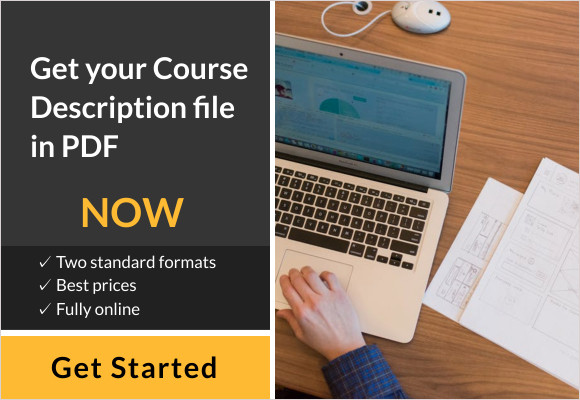Introduction to Academic File Preparation
A well-prepared academic file is essential for graduates aiming to secure international opportunities. These files serve as a comprehensive representation of one’s educational background, achievements, and potential. A strong academic file, which typically includes transcripts, diplomas, letters of recommendation, and proof of language proficiency, can significantly enhance a candidate’s prospects by demonstrating their qualifications and readiness for global roles. For detailed tips on organizing your academic documentation effectively, consider reading our article on Preparing Academic Files for Global Applications.
Employers and academic institutions often use these documents to evaluate applicants. A well-organized file underscores not just academic excellence but also attention to detail, which is vital in professional settings. An organized presentation of academic achievements can help candidates stand out in a competitive job market—a necessity in today’s globalized economy where employers increasingly seek to recruit talent from diverse geographic backgrounds.
Furthermore, the importance of an academic file extends beyond just the job application process; it can also play a critical role in securing visas and ensuring compliance with immigration requirements. The clarity and professionalism of academic documentation can directly influence the outcome of applications for opportunities abroad, thereby altering a graduate’s career trajectory. Therefore, investing time and effort into crafting a compelling academic file not only amplifies a candidate’s appeal but also opens doors to global opportunities that might otherwise remain closed.
Essential Documents for Academic Files
Key documents that should be included in academic files are:
- Transcripts: Academic transcripts are official records that showcase a student’s educational history, including courses taken, grades earned, and degrees conferred. They are crucial for academic applications as they provide evidence of academic performance and achievements. Most institutions require both high school transcripts for undergraduate applications and college transcripts for graduate programs. They help admissions committees evaluate a candidate’s preparedness for the program and understand their academic trajectory [Source: Forbes].
- Recommendation Letters: Recommendation letters are written endorsements from teachers, professors, or professional mentors that speak to a student’s abilities, character, and potential. These letters are essential as they provide a personal perspective on the applicant, highlighting strengths and experiences that transcripts may not fully capture. Strong recommendation letters can significantly influence admissions decisions [Source: Nature].
- Academic Profiles: An academic profile is a comprehensive summary of an applicant’s academic journey, including educational background, research interests, and relevant extracurricular activities. This document helps create a holistic view of the applicant, enabling admission committees to assess how well the student might fit within their program. Highlighting achievements, such as publications or special projects, can strengthen this profile [Source: IGN].
These documents play a pivotal role in the academic application process, each contributing uniquely to present the applicant’s qualifications and readiness for higher education.
Formatting and Presentation Tips
When preparing academic files, adhering to best practices for formatting and presentation is paramount for clarity and professionalism. Consider the following:
- Consistent Formatting: Utilize a unified style throughout your document, including font type (typically Times New Roman or Arial), size (12pt is standard), and line spacing (double spacing is common in academic writing).
- Visual Clarity: Aim for readable documents by incorporating sufficient white space. Avoid cluttered layouts; ensure that elements like tables, charts, and figures are labeled correctly for ease of understanding.
- Standardized Citations: Depending on your field, use the appropriate citation style (e.g., APA, MLA, Chicago). Consistent use of citations helps maintain credibility. Following guidelines from reputable sources, such as the Purdue OWL, can aid in proper formatting.
- Professional Language: Academic writing should be formal and objective. Using clear and concise language enhances the professionalism of your document.
- Proofreading and Editing: Before submission, thoroughly proofread your work for typographical and grammatical errors. Utilizing tools like Grammarly can assist in identifying common mistakes.
- Documentation of Sections: Clearly delineate different sections of your work with appropriate headings that reflect content. A well-organized structure typically consists of an introduction, main body sections, and a conclusion.
- Tables and Figures: Integrate tables and figures only when they add value. Each should have a title and appropriate labels. Refer to each figure and table in your text, explaining their relevance.
By following these formatting and presentation tips, you can enhance the clarity and professionalism of your academic documents, thereby leaving a positive impression on reviewers. For more detailed insights into academic writing, consider exploring our article on best practices in academic writing.
Tailoring Applications for International Institutions
To effectively tailor applications for international universities, prospective students should focus on several key strategies:
- Research Specific Requirements: Institutions often have distinct application procedures. Utilize the institution’s official website and resources like Education World to gather information on their expectations.
- Adapt Your Personal Statement: Personal statements should reflect the unique values and culture of the university. Highlight experiences that resonate with the institution’s mission.
- Customize Letters of Recommendation: Inform recommenders of the distinct qualities the institution looks for to ensure their testimonials accurately reflect the expectations of the admissions committee.
- Highlight Relevant Experiences: When detailing your academic and extracurricular experiences, prioritize those relates closely to the course or program you’re applying for [Source: Nature].
- Format and Language: Pay attention to the format and language used in your documents. Ensure that your grammar and presentation meet the high standards expected by international academies.
- Deadline Awareness: Be meticulous with deadlines. Create a timeline to manage document submission effectively, especially critical for international students who may need additional time for visa applications.
- Incorporate Cultural Nuances: Understanding the cultural context of the university can help in presenting your application. Make sure to convey your readiness to adapt and thrive in a different cultural landscape.
By meticulously customizing your academic files to align with the unique requirements and values of each university, you can significantly enhance your application and stand out in a competitive international selection process. For more guidance, consider exploring additional resources at Course Description.
Accessing Resources and Support
Recent graduates seeking resources and support can tap into a variety of platforms tailored to assist them during the transition from academic life to professional careers. Consider the following options:
- Online Job Portals and Application Platforms: Websites like LinkedIn offer job listings and networking opportunities. Handshake connects students and recent graduates with employers.
- Mentorship Resources: The Mentor Collective connects students with mentors in their career fields. Local communities or alumni associations often facilitate mentorship programs.
- Academic Counseling Services: Many universities provide continuing support through Career Services, where graduates can receive career counseling and resume reviews. The American Counseling Association can connect graduates with certified counselors.
- Networking Events and Workshops: Participate in networking events via platforms like Meetup. Workshops hosted by professional organizations can provide skills training.
- Online Resources: Platforms such as Coursera and edX offer courses designed for job applications, including resume writing and interview preparation.
By utilizing these resources, graduates can obtain the support they need to successfully navigate the challenges of entering the workforce. For more detailed guidance, check out our additional articles on finding mentorship and academic support services.
Sources
- Course Description – Academic Support Services
- Course Description – Finding Mentorship
- Course Description – Preparing Academic Files for Global Applications
- Education World – Schools for Foreign Students
- Forbes – How to Use Claude AI for Crypto Management
- Grammarly – Writing Assistant
- IGN – Rooster Fighter Official Trailer
- Nature – Research Article on Academic Performance
- Purdue OWL – APA Formatting and Style Guide
- Coursera – Online Courses
- Handshake – Job Platforms for Students
- Mentor Collective – Mentorship Programs
- Meetup – Networking Events
- edX – Online Courses
- American Counseling Association – Career Counseling










